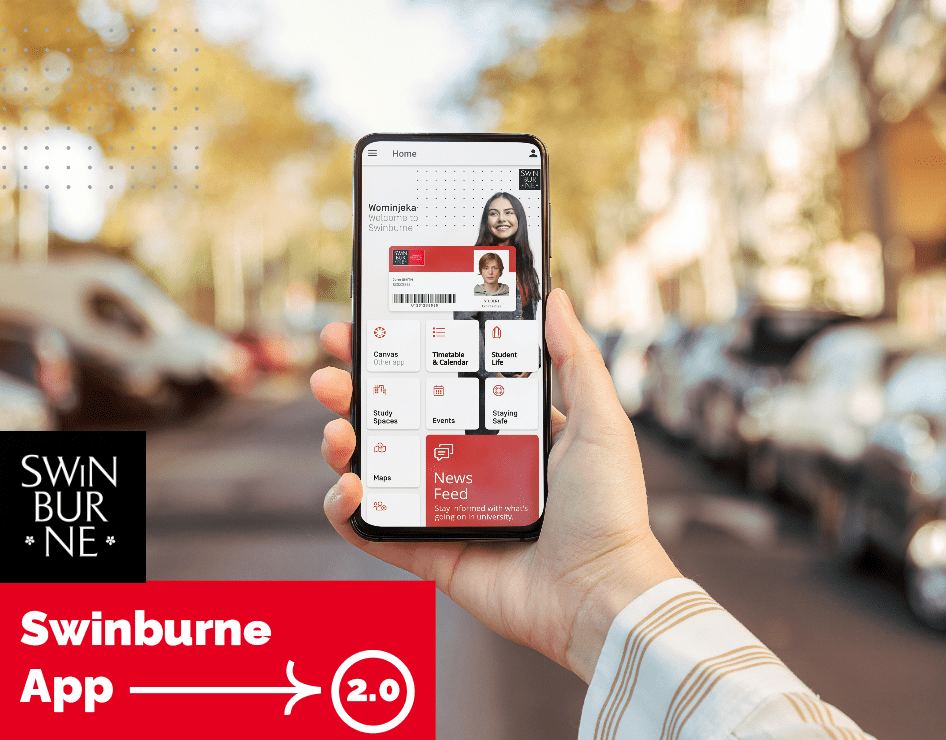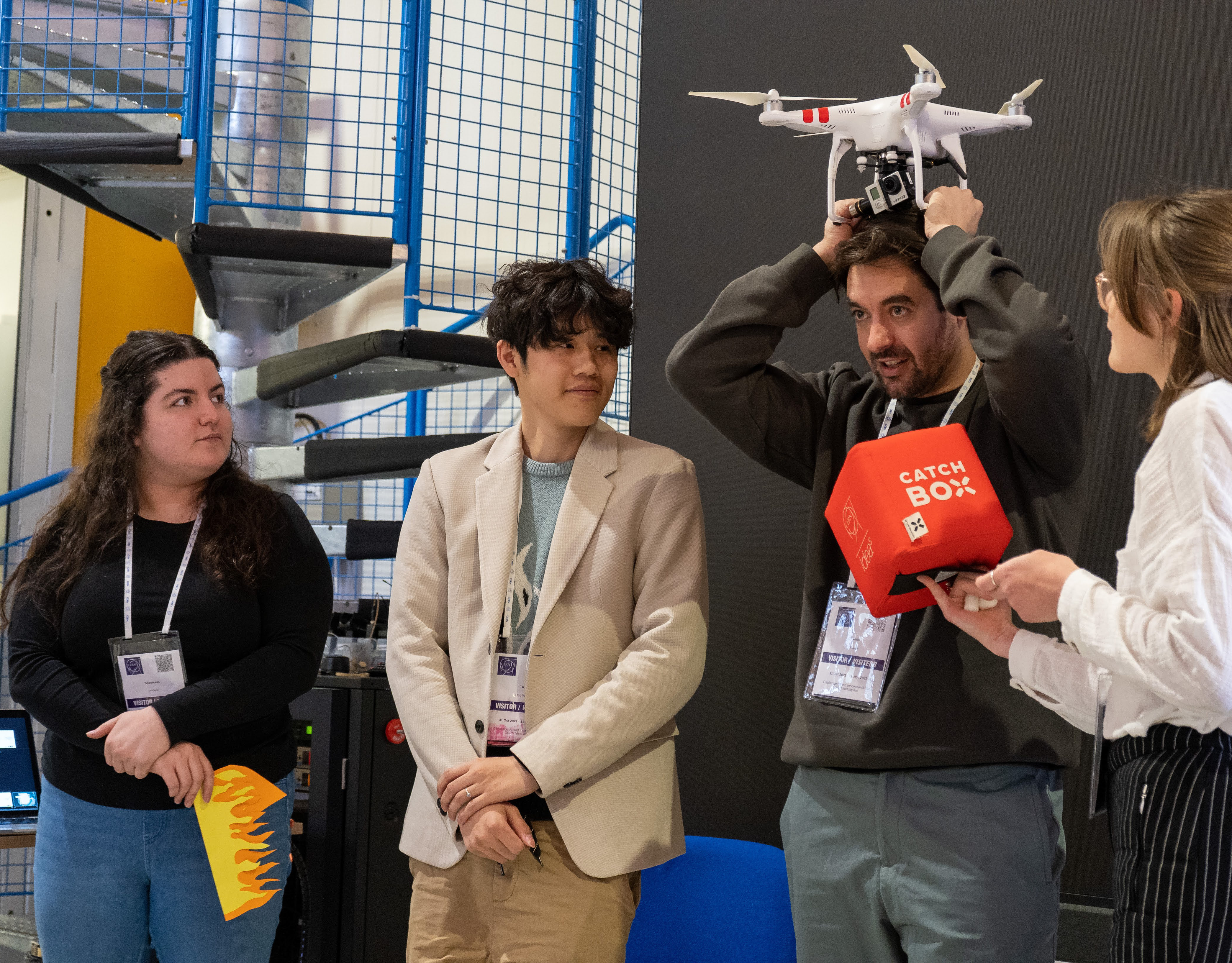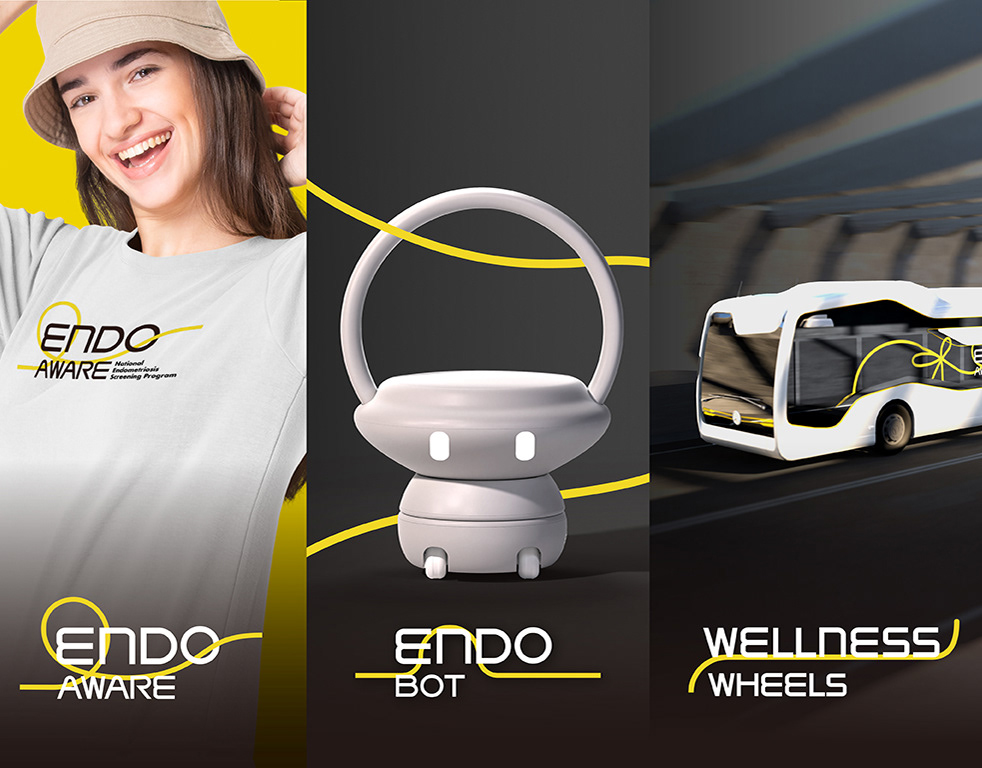Conduct ethical, rigorous, human-centred research to discover, define, and inform design projects.
When I took part in the DFM (Design Factory Melbourne) connection project, which provided us with subject area 'connections' in finding opportunities for improvement within the Swinburne student community, we used the UK Design Council's systems design approach (UK Design Council, 2021) as a design approach. For ethical research, there are two parts relevant to the project.
First, during the research process, we discovered with stakeholder mapping. In this way, we can understand who is directly involved and who is not indirectly involved. For example, through the map, our research areas include Swinburne students and club organisations.
At the same time, we did primary and secondary research to collect data in compliance with the National Statement of Ethical Conduct in Human Research (2007) during interviews, surveys, and data collection prototypes. We defined the project's target users and key issues using those data and the user experience journey and affinity maps. In this way, we built our results on qualitative and quantitative research (CareerFoundry, 2019).
Moreover, before we began each interview and survey, we asked all participants to sign a consent form indicating that the data may be used for academic publications and that the surveys are anonymous. Latulipe (2020) states that designers must pay attention to all stakeholders and how the data collected by designers affect these people.
From this perspective, we found that the Swinburne app is significantly connected to all these stakeholders. So we developed it as a better connection medium for students, club organisations and Swinburne.
Another human-centred research project I have been involved in DFM is Challenge-Based Innovation A3 of the CERN (the European Organization for Nuclear Research), which could be a crucial example.
This initiative aims to provide design solutions addressing Sustainable Development Goal 3: health and well-being for future societal implementations that integrate their deep technology and science. However, as Almond (2020) mentions, the concept of viability has remained the same, only desirable change. From this perspective, We attempt radical thinking and design-driven innovation in this project (Verganti, 2009). Therefore, we started with preparatory research (TiSDD Method: Preparatory Research, n.d.), researching societal issues and transforming them into new opportunities that innovate with deep technologies.
There are multiple research and innovation approaches we use in this project. For example, we started with the “problem statement”, "point of view statement", and “how might we statement”, which built on our secondary research. Moreover, we also created a user journey map to specify why women's diagnosis is delayed in Australia. There is another research we did on bushfires. We initially looked at the water and air quality for people. After we did a systematic map and five why statements (Frame Your Design Challenge, n.d.), we started focusing on what issues cause them, which sectors are involved, and whether the solution is environmentally friendly and economical.
Investigate co-creation applied to design innovation practices across diverse sectors.
In the CBI-A3 project, everyone is creative to accept co-creativity (Sanders & Stappers, 2008). We experience design innovation across diversity with team members from different countries, Australia and Taiwan, speaking different languages (English and Mandarin), and different sexual and design specialties, including communication, industrial and user experience design. It makes decolonising design may happen in our teamwork. Besides, we received more unique ideas and accepted radical thinking during co-creation. For example, we focus on women's delayed diagnoses in Australia because two team members' family members had endometriosis, and they provided more detailed information for us.
As Sanders & Stappers (2008) indicate, designers come nearer to the people who will eventually utilise their designs. Therefore, there must have methods for following this possibility. We explored the “pre-design” step (Sanders & Stappers, 2008) for two weeks in Cern, Switzerland. However, Iskander (2018) shows that following the design thinking process steps entirely may cause issues and restrict ideas. Therefore, we followed part of the UK Design Council's systems design approach (UK Design Council, 2021), Design Thinking (IDEO, 2017) and focused on teamwork and communication to generate ideas. For example, rather than having a stable leader, we share ideas through team dynamics sessions and share the same value.
Moreover, we used the axis mapping for the CBI-A3 child poisoning problem to discuss and decide which idea should be prototyped. We also use the weighted decision matrix to decide which area to focus on in phase 1. Moreover, we are working with scientists in the Cern and the Attract technology, presenting our ideas and prototype to them to exchange feedback.
Create prototypes to generate, explore and develop ideas.
As Kocsis et al. (2017) mention, prototyping should be used from the very beginning of the project. For example, during the primary research in the DFM connection project, we did a prototype that exchanged the thought of students with candies to collect data. Moreover, it is highly successful. We collected 41 pieces of data from the student in one hour. On the other hand, if team members have diverse thoughts, prototyping can help them discuss what path to continue (Dam, 2019). For example, we had two possibilities in the DFM Swinburne Connection project and decided to prototype both in the intermediate stage. From tests and evaluations, we know Swinburne App has more potential than another one and continue to develop this idea.
Moreover, we used cardboard to create the low-resolution user interface prototype for the first user test. After it, we did the high-quality version for our final stage presentation. (BALCAITIS, 2019)
In the CBI-A3 project, we followed the three practical ways for the prototype that Kocsis et al. (2017) recommend. First, for the regular conduction, we prototyped at least ten ideas in the Cern and used them to discuss with scientists and lecturers. Besides, team members' participation should be required during prototyping. Through role-playing, all team members must explain the content. For example, there is often a need for a doctor and a patient in our presentation section because it is helpful for us to express the idea to the audience.
Construct documentation that communicates the value and intent of a design solution to an interdisciplinary audience.
In the DFM connection project, we aim to increase the connection between students in Swinburne. Therefore, we only improved the existing App rather than using high-tech, rescheduled timetables or creating new events. As a result, club organisations and staff can benefit and have more willingness to build connections. From our test stage interviews, we received many positive comments about this new improvement from students. Moreover, we submitted the white paper in the presentation stage, which included “Business Model Canvas, Value to Users and Future Opportunities”. Moreover, we did a solution video to explain the problem and idea in a short time. It includes the App before and after comparing and what kind of benefits it will take for stakeholders.
For the CBI-A3 project, we experienced several small presentations during two weeks of the intensive program for presenting our innovative ideas. For example, we use statistics and secondary research to show the impact bushfire cause and the situation that vision-impaired people face. Moreover, when we presented the problem of delayed women’s diagnosis in Australia, we used the persona and user experience map to explain why it is a significant issue. Ultimately, a white paper clearly explains the problem area, the deep tech we used, and the solution space we provided. It also includes value for who and what impact it will have.
Develop design solutions that provide value to specific users in response to complex project briefs.
Several factors are involved in the DFM connection project, which means our design is not only for students but also for those involved in organisations and staff. For example, in the preparatory research (#TiSDD Method: Preparatory Research, n.d.) stage, through stakeholder mapping, we could set a range of influence factors.
Moreover, after primary research, such as interviews and surveys, we analysed and evaluated the data by affinity mapping and system mapping. In this way, we focused on crucial factors that influence students’ connection. After it, we used persona and user journey maps to specify our target users. This way, we figured out why students do not join clubs. Finally, from testing two solution prototypes, developing Swinburne App is the best option for improving student connections.
Another example from the CBI-A3 project is that we designed a solution for women’s delayed diagnosis in Australia. We researched five types of chronic illness through secondary research and systematic maps and finally focused on endometriosis. We used “five why” to analyse and conclude three key reasons.
After it, combined with our research and deep technology, we started to generate radical ideas, developed and ended with practical possibilities. In this project, several factors should be considered carefully by us. The first one is the impact of deep technology. Second, identifying the potential problem and specific users under SDG 3: health and wellbeing. The final one is that it should be futuristic because the timeline of the solution is 2030.
Interpret contextual and human factors to provide a rationale for speculative design with environmental and social responsibility.
According to UK Design Council's systems design approach (UK Design Council, 2021), I believe I participate in those two projects as a system thinker and designer/maker. For example, I devised the widget timetable for the DFM connection project and explored the possibility of including the printing website and online shops. Besides, I did part of the high-quality App UI in the final stage and designed the white paper.
On the other hand, we focused more on the rationale for speculative design with environmental and social responsibility for the CBI-A3 project. As Almond (2020) mentions, in every design stage, we should ask ourselves, “should we be doing this”.
For example, we built our future context for 2030: health at home at ARUP (2019) and The future today institute (2022) content. Moreover, we keep looking at the impact of materials and the tech used in this project. For example, we used 3D printing to create the models from patients’ scanning. Therefore, there are two factors we are also considering. One is whether the materials of 3D printing can be reused or not. Another is whether the tech we use for scanning harms humans or not. We considered the same factors in the solution to the bushfire problem.
We combined drones, fire extinguishers and deep tech. So we also considered whether the fire extinguisher foam material is environmentally friendly.
References
Almond, A. (2020, July 2). Designers, we need to talk about Desirable, Viable, Feasible. Medium. https://medium.com/@alexandra_89654/designers-we-need-to-talk-about-desirable-viable-feasible-c30209e859b4
ARUP. (2019). Four plausible futures: 2050 scenarios - Arup. Www.arup.com. https://www.arup.com/perspectives/publications/research/section/2050-scenarios-four-plausible-futures
BALCAITIS, R. (2019, June 15). Design Thinking models. Stanford d.school. Empathize IT. https://empathizeit.com/design-thinking-models-stanford-d-school/
CareerFoundry. (2019, March 29). The UX Research Methods Every Designer Needs To Know. Www.youtube.com. https://www.youtube.com/watch?v=gGZGDnTY454&t=186s
Dam, R. (2019, January 26). 5 Stages in the Design Thinking Process. The Interaction Design Foundation. https://www.interaction-design.org/literature/article/5-stages-in-the-design-thinking-process
Frame Your Design Challenge. (n.d.). Www.designkit.org. https://www.designkit.org/methods/frame-your-design-challenge
IDEO. (2017). What is Design Thinking? IDEO U. https://www.ideou.com/blogs/inspiration/what-is-design-thinking
Iskander, N. (2018, September 26). Design Thinking Is Fundamentally Conservative and Preserves the Status Quo. Harvard Business Review. https://hbr.org/2018/09/design-thinking-is-fundamentally-conservative-and-preserves-the-status-quo
Kocsis, A., Coddington, A., Prince, A., Giang, C., Symington, N., Graham, A., de Kruiff, A., Turner, C., Mattila, P., Thong, C., Eggleston, J (2017). Prototyping the prototype: Brokering innovation projects. In Björklund, T.A., Laakso M., Kirjavainen, S. & Ekman, K. (eds.) (2017). Passion-based co-creation. Aalto University, Helsinki. ISBN 978-952-60-3740-0, pp. 51-64.
Latulipe, C. (2020, August 24). Ethics in human centered design research. Www.youtube.com. https://www.youtube.com/watch?v=hobdehff05c&t=171s
Noel, L.-A. (n.d.). DeColonizing Design Thinking. Theconversationfactory.com. https://theconversationfactory.com/podcast/decolonizing-design-thinking-with-dr-lesley-ann-noel
Sanders, E. B.-N. ., & Stappers, P. J. (2008). Co-creation and the new landscapes of design. CoDesign, 4(1), 5–18. https://doi.org/10.1080/15710880701875068
TiSDD Method: Preparatory research. (n.d.). Www.thisisservicedesigndoing.com. https://www.thisisservicedesigndoing.com/methods/preparatory-research
The Future Today Institute. (2022). 2022 Tech Trends | The Future Today Institute. Retrieved from https://futuretodayinstitute.com/trends/
UK Design council. (2021, April). Beyond Net Zero: A Systemic Design Approach. Www.designcouncil.org.uk. https://www.designcouncil.org.uk/our-work/skills-learning/tools-frameworks/beyond-net-zero-a-systemic-design-approach/
Verganti, R. (2009). Design Driven Innovation: Changing the Rules of Competition by Radically Innovating What Things Mean. In Amazon. Harvard Business Review Press.
Turnitin Plagiarism Check: one percentage.




